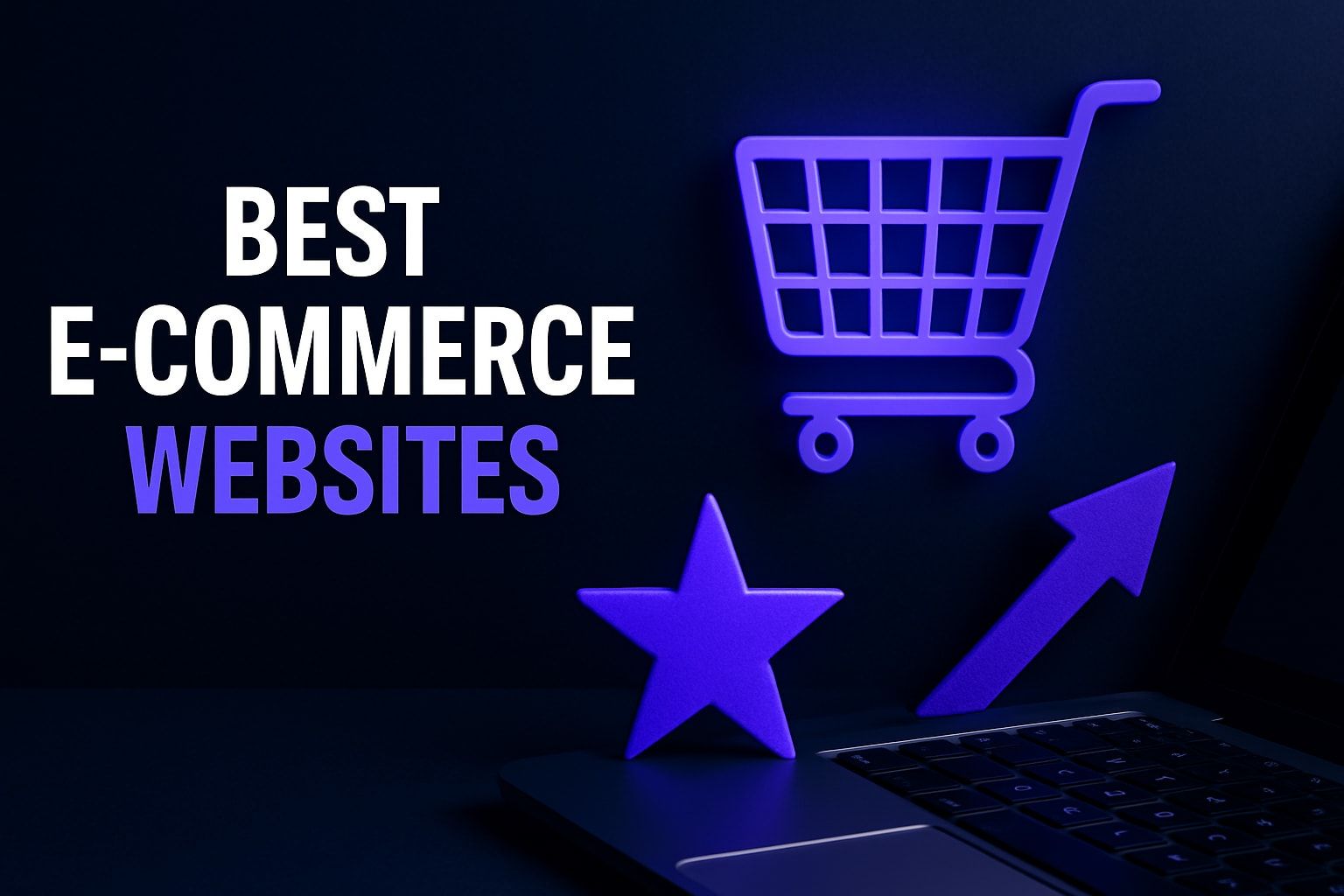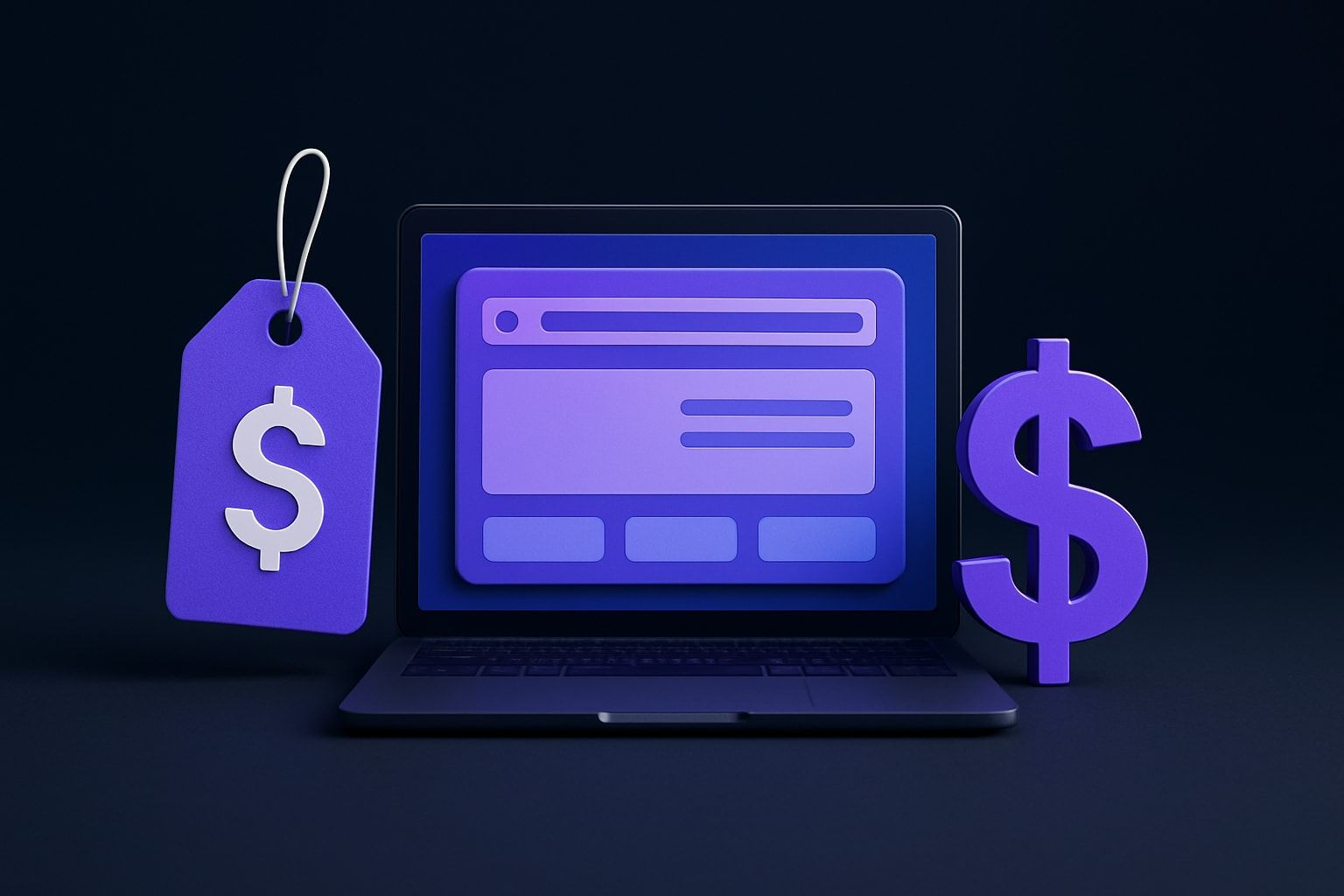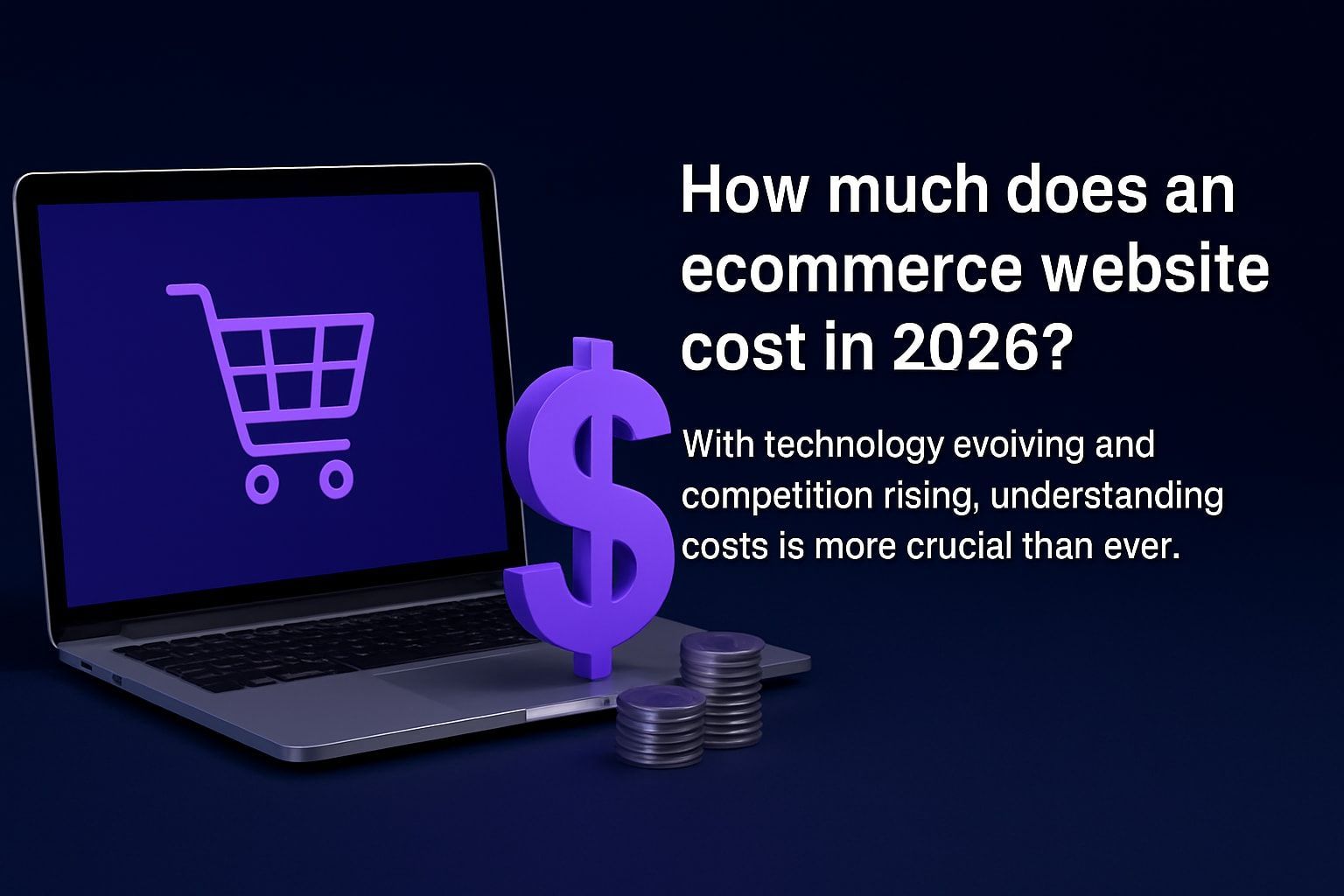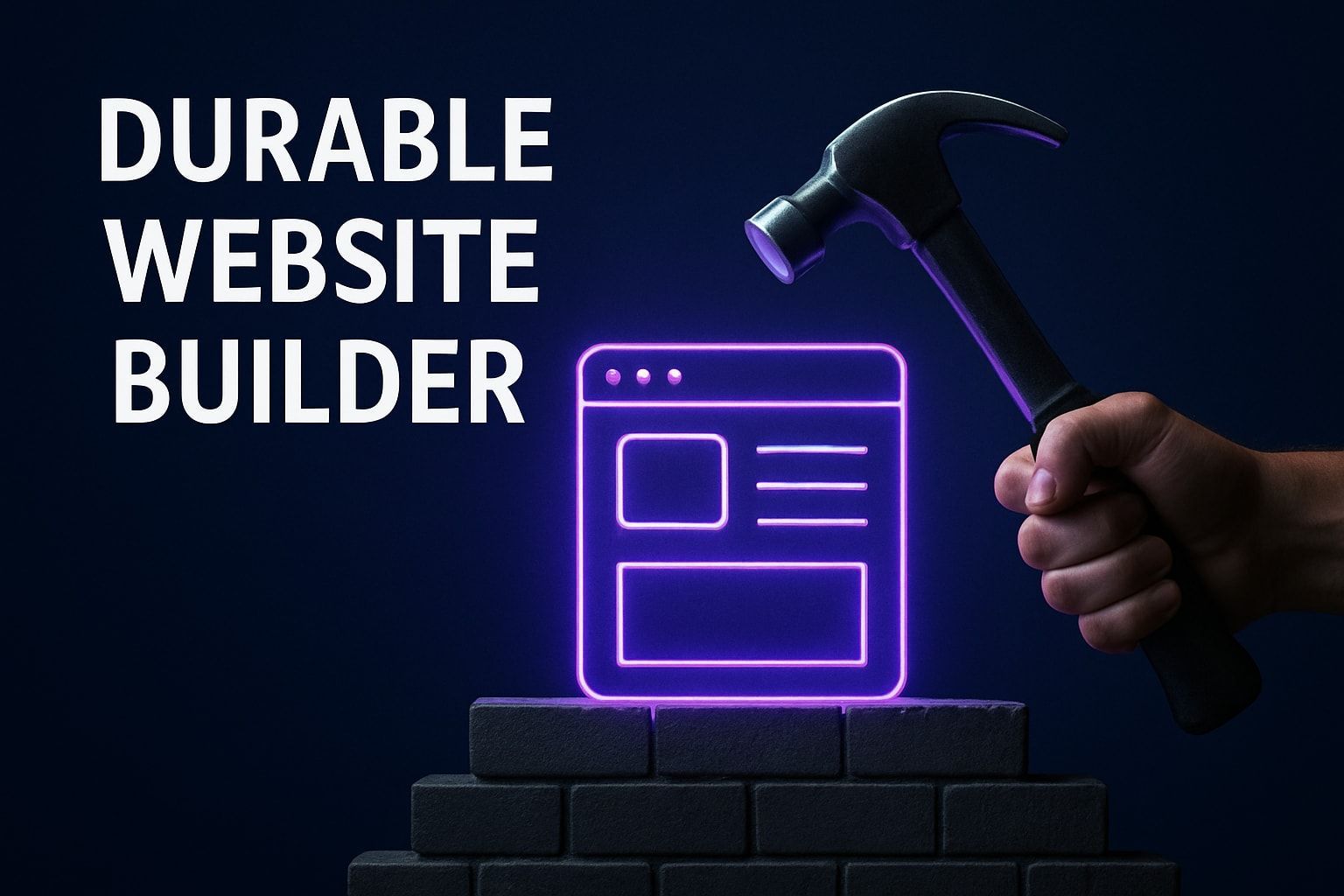Page Build Guide: Step-by-Step Tutorial for 2025
Ready to build a stunning website in 2025 without any coding headaches? This is your go-to page build guide, crafted for modern creators who want results fast.
In today’s digital world, a high-performing web page is essential for marketers, entrepreneurs, and small business owners. But how do you build a page that’s both beautiful and designed to convert?
This step-by-step tutorial covers every stage of the page build process. You’ll learn how to plan, choose the right platform, design layouts, create content, optimize for SEO, test, and launch.
The digital landscape is evolving. Leading brands are launching pages in hours, not weeks. Unlock the secrets to building pages that convert, scale, and rank. Ready to start your professional page build journey? Let’s dive in.
Understanding Modern Page Building in 2025
The world of page build has transformed dramatically in recent years. What once required advanced coding skills and weeks of development can now be accomplished in hours by anyone with the right tools. This evolution has opened the door for marketers, entrepreneurs, and small business owners to take control and innovate faster than ever.

The Evolution of Page Building Tools
The traditional page build process relied heavily on manual coding and specialized developers. Over the past decade, we've witnessed a major shift toward drag-and-drop editors and AI-powered platforms. No-code solutions like Webflow and ConvertFlow have made web creation accessible to everyone, regardless of technical background.
Modern platforms now bundle advanced features such as A/B testing, analytics, e-commerce, and personalization directly into the page build workflow. This democratization of web design has changed how teams launch and iterate on new digital experiences, enabling rapid innovation and experimentation.
Key Trends Shaping 2025 Page Builds
Several trends are defining the future of page build in 2025. Mobile-first and fully responsive design are the new standard, ensuring every visitor has a seamless experience regardless of device. AI-assisted content and design generation accelerate the creation process, while modular components and reusable templates help brands maintain consistency across campaigns.
Conversion optimization is central to every page build, with real-time analytics guiding decisions and adjustments. According to Web Design Statistics for 2025, over 60,000 brands now leverage drag-and-drop builders, and optimized funnels can achieve purchase rates as high as 16%. These trends are pushing the boundaries of what's possible in digital marketing.
Benefits of Modern Page Building
The impact of a modern page build approach is significant. Teams can launch new pages in hours instead of weeks, allowing businesses to respond swiftly to opportunities and market changes. Marketers and entrepreneurs are empowered to create and test campaigns independently, minimizing delays and reducing dependency on development resources.
This agility reduces bottlenecks for both design and development teams. For example, marketers at MURAL have been able to launch campaigns more efficiently by embracing drag-and-drop page build tools. The result? Faster go-to-market and more frequent iteration cycles.
Challenges and Solutions
Despite the advantages, the page build process isn't without challenges. Maintaining brand consistency across multiple teams can be difficult, especially as more people contribute to web assets. Introducing new pages without triggering unwanted site-wide design changes is another common issue.
To address these, organizations are turning to approved templates, restricted access for editing, and scalable SaaS platforms. These solutions ensure every page build aligns with brand guidelines while supporting growth and security. Scalability and robust permissions are now built into the best-in-class page build platforms.
The Role of AI and Automation
AI is playing an increasingly critical role in the page build landscape. Platforms use AI to suggest optimal layouts, generate content, and provide SEO recommendations that help pages perform better in search results. Automated workflows now handle publishing, testing, and analytics, freeing up teams to focus on strategy and creativity.
Some tools even offer AI-generated copy and design suggestions, streamlining the entire page build process from concept to launch. As automation becomes more sophisticated, building, testing, and optimizing high-converting pages has never been more accessible.
Step 1: Planning Your Web Page
Starting a successful page build in 2025 begins with strategic planning. Before you touch a single design element, it’s essential to lay the groundwork for a page build that’s focused, effective, and tailored to your business goals. Let’s break down what you need to do before launching into the creative phase.
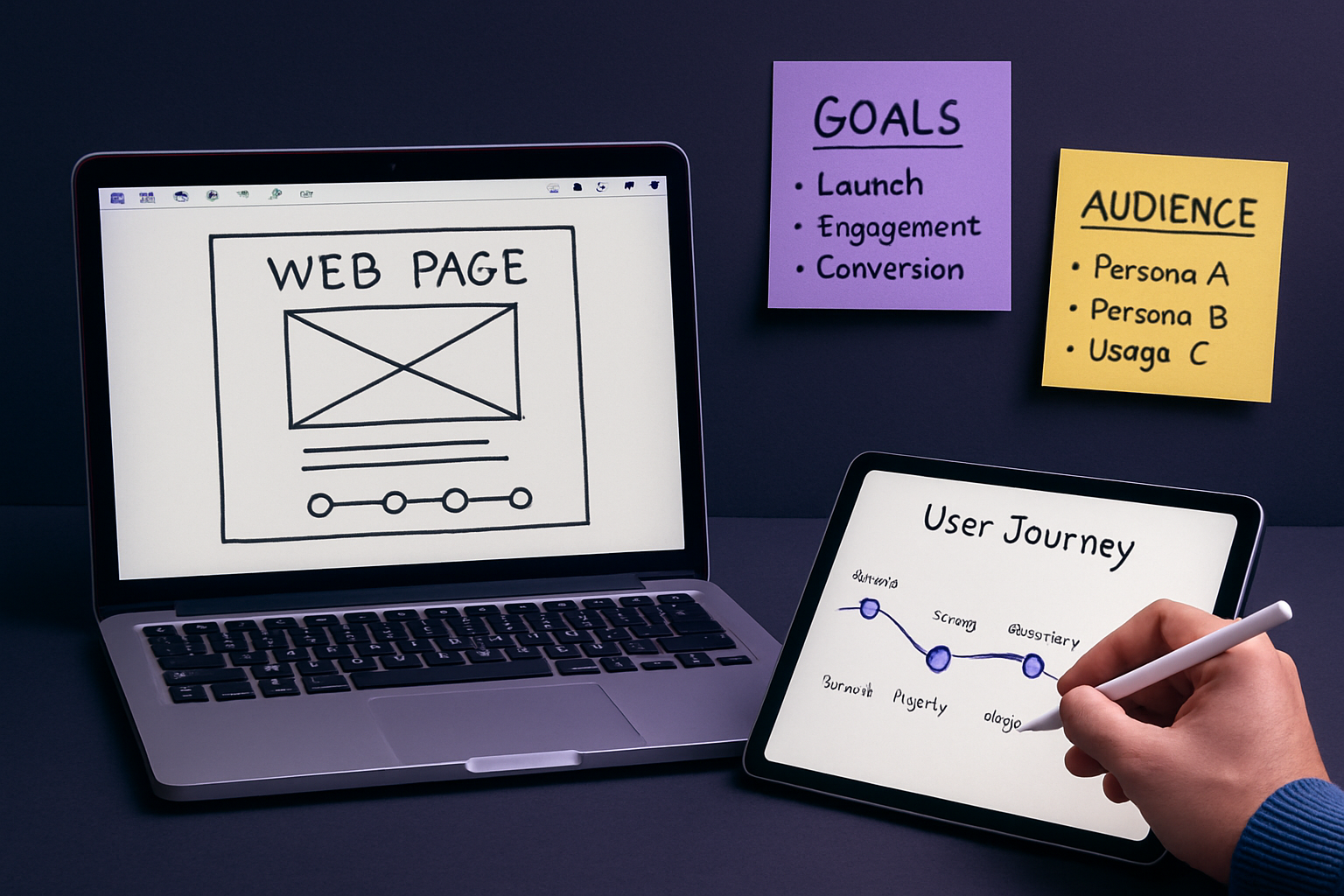
Defining Your Page Goal and Audience
Every page build starts with a clear goal in mind. Are you aiming to capture leads, sell a product, or drive event registrations? Clarifying this objective shapes every decision that follows.
Next, define your audience. Who are you hoping to reach? Consider demographics, behaviors, and pain points. For example, if you’re creating a bundle offer page, your audience might be value-driven shoppers seeking deals. A laser-focused goal and audience profile will keep your page build on track.
Mapping the User Journey
A high-converting page build requires mapping the ideal user journey. Think about the steps visitors should take from landing on your site to completing your desired action.
Customer journey maps and funnel builders are invaluable at this stage. Outline each touchpoint—from the headline that grabs attention to the final call to action. By visualizing this flow, you can ensure your page build leads users seamlessly toward conversion.
Researching Competitors and Inspiration
Don’t reinvent the wheel for your next page build. Analyze top-performing landing pages within your industry. What design choices, offers, and layouts are working for them?
Explore template libraries and campaign examples to find inspiration and shortcuts. For a head start, consider browsing website templates for fast page builds that fit your niche. This approach provides a proven foundation and helps you spot trends that resonate with your target audience.
Setting Measurable KPIs
To evaluate your page build’s success, set clear, measurable KPIs. Common metrics include:
- Conversion rate (how many visitors take action)
- Add-to-cart rate (for product pages)
- Opt-in rate (for lead generation)
Data shows that optimized product landing pages can achieve add-to-cart rates as high as 23%. Establishing these benchmarks gives your page build a clear target and informs future optimization.
Gathering Assets and Content Requirements
An efficient page build relies on preparation. List every asset you’ll need:
- High-quality images and graphics
- Persuasive copy and testimonials
- Product details and pricing
- Forms for lead capture or checkout
Don’t forget integrations with email/SMS platforms, CRMs, and analytics tools. Preparing these elements in advance streamlines your page build and ensures a smooth transition from planning to execution.
Step 2: Choosing the Right Page Builder Platform
Selecting the right page build platform is a game-changer for your website’s success. With so many options in 2025, it’s crucial to evaluate each tool’s features, integrations, and flexibility before committing. Your choice will shape how easily you can create, optimize, and scale your web presence.
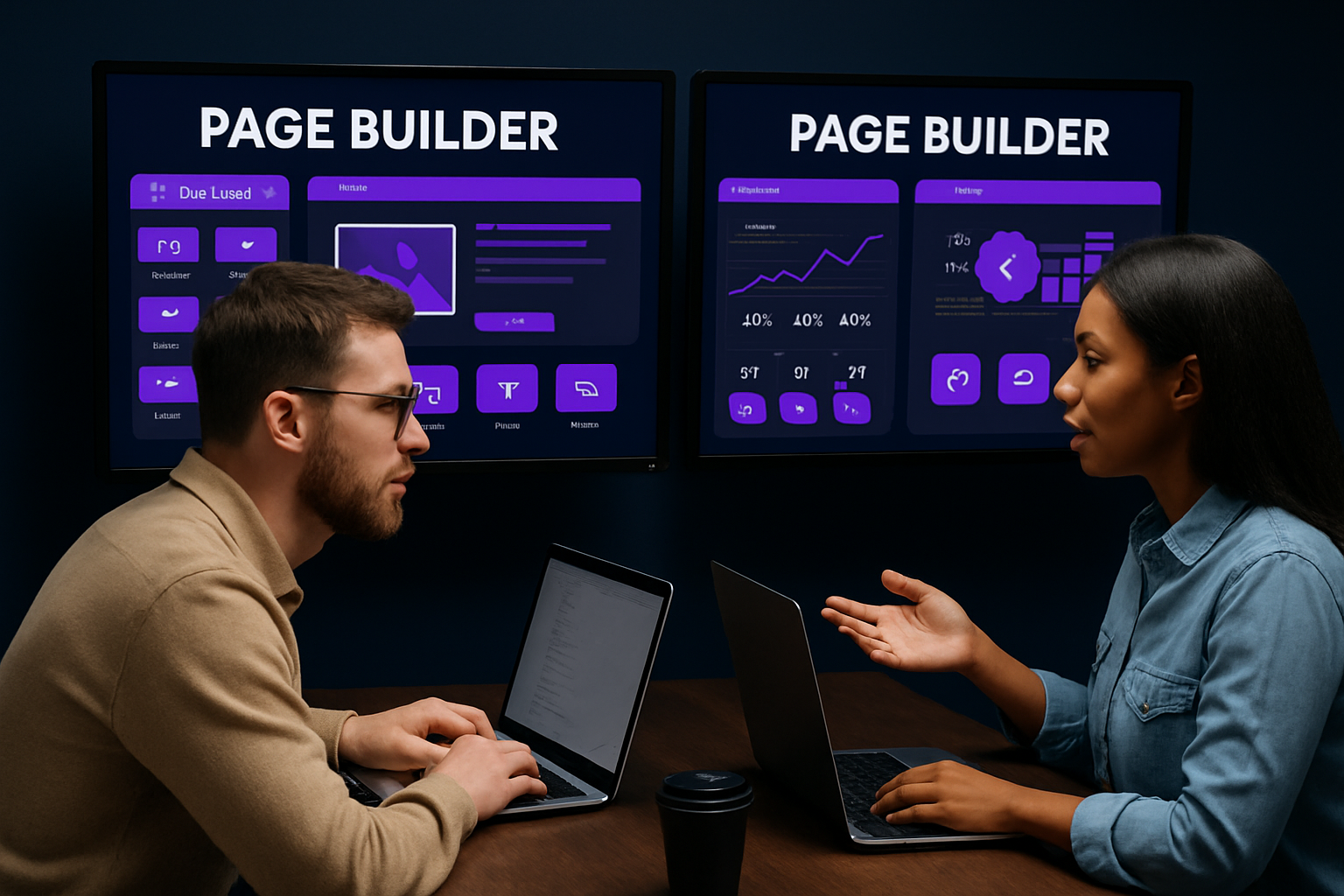
Evaluating Core Features
When comparing page build platforms, focus on core capabilities that streamline your workflow. Look for intuitive drag-and-drop editing, a wide range of templates, and mobile responsiveness as non-negotiables. Advanced features like built-in A/B testing, analytics, and personalization are now standard for high-performing sites.
Here’s a quick comparison of leading platforms:
| Feature | Webflow | ConvertFlow |
|---|---|---|
| Drag-and-drop | Yes | Yes |
| Template variety | High | High |
| A/B Testing | Yes | Yes |
| Personalization | Yes | Yes |
| Real-time collaboration | Yes | No |
The right page build platform should empower your team to launch quickly and iterate without friction.
Assessing Integration Options
Seamless integration is vital for marketing efficiency. Your page build tool should connect effortlessly with popular platforms like Shopify, Klaviyo, Mailchimp, and HubSpot. This ensures smooth syncing with your CRM, email, and SMS campaigns.
- Check for native integrations.
- Review API support for custom workflows.
- Confirm real-time data syncing.
With robust integrations, you can automate lead capture, segment audiences, and drive conversions from your page build efforts.
Security, Scalability, and Support
Security and scalability are non-negotiable for any modern page build strategy. Look for platforms offering secure hosting, data compliance (GDPR, CCPA), and responsive technical support. For example, Waste Connections unified over 300 brands using scalable SaaS solutions, ensuring consistent uptime and easy management.
- Prioritize platforms with dedicated support teams.
- Ensure regular updates and security patches.
- Choose solutions that scale with your business growth.
A reliable page build platform minimizes risk and future-proofs your web operations.
Comparing Top Platforms for 2025
Webflow and ConvertFlow lead the way for page build innovation in 2025. Webflow offers a visual-first editor, on-brand templates, and real-time collaboration, making it ideal for design-driven teams. ConvertFlow stands out as a multi-channel campaign builder with funnel analytics and no-code simplicity.
- Webflow: Trusted by creative teams for design flexibility.
- ConvertFlow: Used by 110,000+ brands, rated 4.9/5 on G2.
Many platforms now include AI-powered suggestions for layout and content. For a deeper look at AI features enhancing the page build process, explore this AI assistant for web design.
Cost, Flexibility, and Ease of Use
Consider your budget and workflow needs. Many page build platforms offer free plans with core features, while premium tiers unlock advanced customization, analytics, and integrations.
- Assess customization options to fit your brand.
- Evaluate user interface simplicity for your team.
- Factor in onboarding and long-term support.
The best page build platform balances affordability with the power to scale and adapt as your business evolves.
Step 3: Designing the Structure and Layout
Designing a modern page build is all about combining speed, flexibility, and user experience. In 2025, creating a stunning layout means using smart tools and proven strategies to ensure your website looks great and performs even better. Let’s break down the essentials for a high-performing structure and layout.
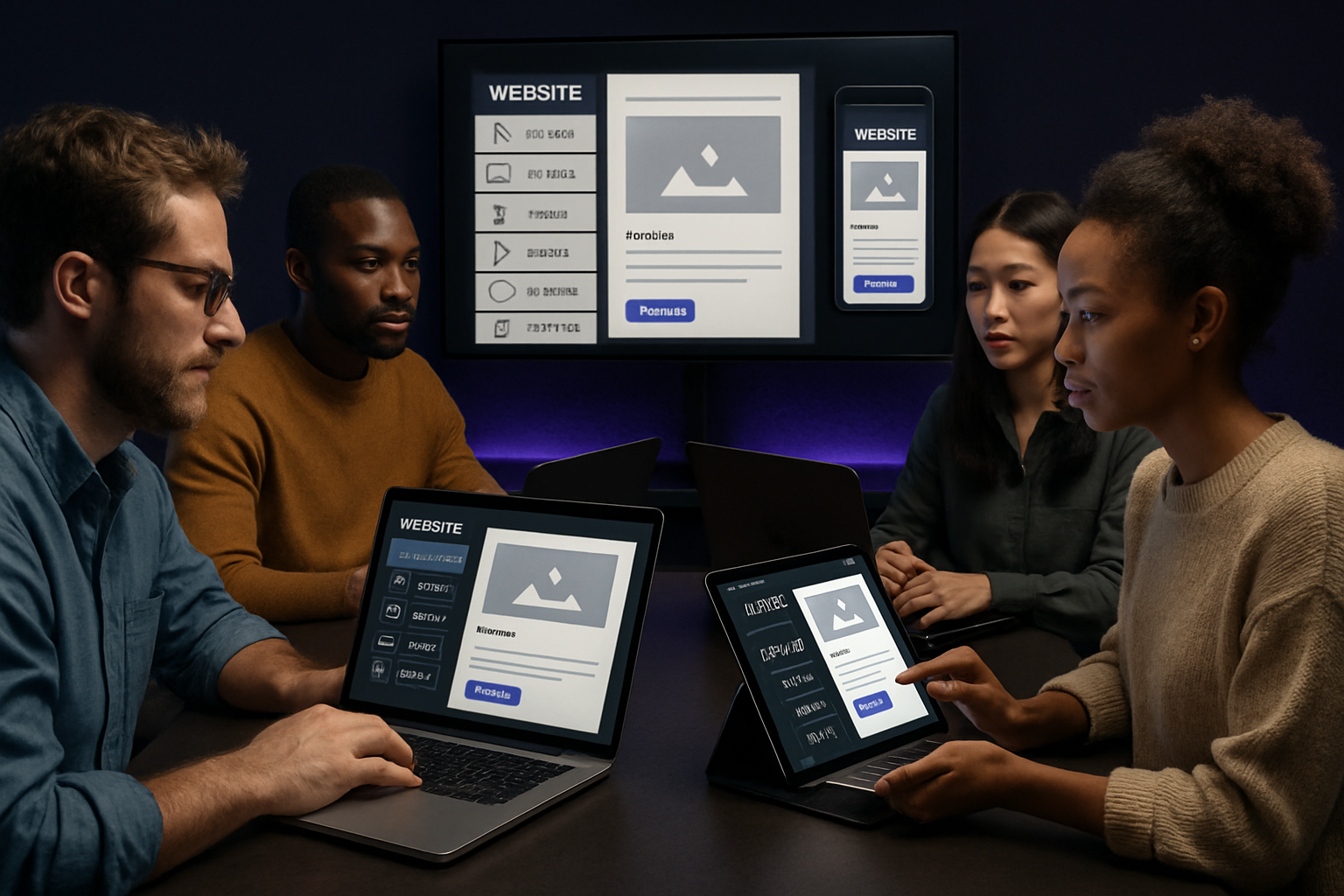
Building with Templates and Components
Start your page build by selecting from professionally designed templates. These templates are crafted for specific goals—think campaigns, product launches, or lead generation.
Using modular components, you can easily swap sections, rearrange blocks, and update layouts with just a few clicks. This modular approach ensures you’re not reinventing the wheel every time.
Templates help maintain consistency across all your pages, making your page build process smoother and faster.
Mobile-First and Responsive Design
A successful page build must prioritize mobile-first and responsive design. With over half of all web traffic coming from mobile devices, your site needs to look flawless on any screen.
Modern builders automatically adjust layouts, images, and text for smartphones and tablets. For more insights on why this matters, check out these web design trends and statistics.
Responsive design isn’t just a bonus—it’s a baseline expectation in every page build.
Visual Hierarchy and User Experience
Every page build should guide visitors’ eyes to the most important elements. Arrange CTAs, forms, and trust signals (like reviews and testimonials) where users naturally look.
A focused visual hierarchy ensures users know exactly what action to take next. For example, a product landing page might highlight a single bold “Buy” button, drawing attention and reducing distractions.
Great user experience is at the heart of any high-converting page build.
Branding Consistency and Customization
Your page build should always reflect your brand. Apply approved color palettes, fonts, and logos to every page.
Use design systems or shared style guides to keep branding consistent, no matter who’s building. Customizing templates with your unique branding helps your site stand out and stay memorable.
Consistency builds trust, and your page build should reinforce your brand identity at every touchpoint.
Accessibility and Performance Optimization
Ensure your page build is usable for everyone by following accessibility best practices. Use clear headings, alt text for images, and high-contrast color schemes.
Optimize images and scripts to keep load times fast—slow pages lose visitors quickly. Every detail, from font size to button placement, impacts performance and accessibility.
A well-optimized page build means more users can access and enjoy your content.
Streamlining Workflow with Shared Libraries
Shared libraries bring efficiency to your page build process. Designers can create approved building blocks, which marketers then use to assemble pages quickly.
This approach reduces errors and keeps every page build on-brand. Team collaboration becomes seamless, and scaling up for new campaigns is much easier.
With shared assets, your workflow stays streamlined and effective, supporting every page build from idea to launch.
Step 4: Creating and Optimizing Page Content
Publishing a high-converting web page in 2025 goes beyond stunning visuals. The secret sauce is content tailored to your audience, optimized for both engagement and performance. Let’s break down how to craft each element of your page build for maximum impact.
Writing High-Converting Copy
Start every page build with a headline that grabs attention and body copy that speaks directly to your audience’s needs. Use short, benefit-driven sentences and focus on what your offer solves.
- Highlight unique selling points.
- Use clear, action-oriented CTAs.
- Incorporate testimonials for trust.
For example, a landing page for a bundle deal might lead with, “Save more with our exclusive offer—trusted by 10,000+ happy customers.” Keep every section skimmable, and always write with clarity and purpose.
Incorporating Visual Elements
Images, videos, and graphics amplify your message and boost engagement on every page build. Invest in high-quality, relevant visuals that support your copy and guide users toward your CTA.
- Use product images, explainer videos, and infographics.
- Visualize incentives, such as bundles or limited-time offers.
- Ensure all images are optimized for fast loading.
A well-placed hero image or video can instantly communicate value and help visitors connect emotionally with your brand.
Implementing Forms and Lead Capture Tools
Lead capture is vital for any page build that aims to convert visitors into customers or subscribers. Use multi-step forms to reduce friction and increase completion rates.
- Keep forms short and intuitive.
- Offer incentives (e.g., discounts or guides) for sign-ups.
- Integrate quizzes or surveys to segment leads.
Many marketers praise multi-step forms for their ability to guide users smoothly through the sign-up process, resulting in higher conversion rates.
Personalization and Dynamic Content
Personalization turns a generic page build into a tailored, memorable experience. Use dynamic content blocks to show relevant offers, bundles, or testimonials based on each visitor’s behavior.
- Display personalized recommendations.
- Use conditional logic to route leads.
- Adapt messaging for returning visitors.
This approach ensures every user feels seen and increases the likelihood they’ll take the next step—whether that’s making a purchase or signing up.
SEO Best Practices for 2025
Modern page build strategies must include robust SEO to drive sustainable traffic. Optimize every element—meta tags, headings, and alt text—while structuring content for both users and AI-powered search engines.
- Use descriptive, keyword-rich headings.
- Write clear meta descriptions and image alt tags.
- Structure content for featured snippets and voice search.
For a deep dive into the latest optimization techniques, check out SEO best practices for 2025. Staying ahead in search rankings means adapting to evolving algorithms and user behaviors.
Compliance and Data Privacy
Trust is non-negotiable in any page build. Ensure your forms and data handling comply with GDPR, CCPA, and other global standards.
- Use transparent consent checkboxes.
- Clearly state how data will be used.
- Regularly review privacy policies.
Prioritizing privacy builds confidence with your audience and keeps your brand protected as regulations evolve.
Step 5: Testing, Analyzing, and Launching Your Page
Before hitting publish, every high-performing page build needs a rigorous final check. This step ensures your efforts pay off with a seamless user experience, optimal conversion rates, and a smooth launch. Let’s break down the essential processes to help you move from draft to live with confidence.
Pre-Launch Checklist
A successful page build always starts with a thorough pre-launch checklist. Test your web page across all major browsers and devices to guarantee a consistent look and feel. Double-check every link, form, and integration—broken elements can kill conversions instantly.
- Validate that all call-to-action buttons function correctly.
- Ensure integrations with email marketing and analytics platforms are active.
- Verify loading speed and mobile responsiveness.
A detailed page build review at this stage reduces post-launch surprises and keeps your project on track.
A/B Testing and Experimentation
Take your page build to the next level with robust A/B testing. Set up split tests for crucial elements like headlines, layouts, and offers. Use real-time analytics to identify what resonates most with your audience.
Modern platforms leverage AI to automate and optimize these experiments, offering actionable insights quickly. For a deeper dive into how AI is shaping web experimentation, check out the AI in Web Development Research Paper, which explores cutting-edge standards for client-side interactions.
Funnel Analytics and User Behavior Insights
Once your page build is live, analytics become your compass. Track conversion rates, bounce rates, and user journeys to uncover friction points and opportunities.
Use built-in analytics dashboards or connect with your favorite tools to visualize performance. Create simple tables to monitor trends and compare before/after test results. Data-driven decisions ensure your page build evolves alongside user needs.
Gathering Feedback and Iterating
No page build is ever truly finished. Collect feedback using short surveys, usability tests, and direct user comments. Invite team members to review the user journey from landing to conversion.
- Ask real users to complete key actions and note any confusion.
- Review heatmaps and session recordings for deeper insights.
Iterate quickly based on what you learn, turning every insight into a measurable improvement.
Launching and Promoting Your Page
With your page build thoroughly tested, it’s time to launch. Modern tools allow for one-click deployment, instantly taking your page live. Share your new URL across email, social media, and ad campaigns to drive traffic from day one.
For advanced strategies—like embedding landing pages within other websites—explore this step-by-step website embedding guide. Dedicated URLs make it easy to track performance and tailor promotions to different channels.
Scaling and Managing Multiple Pages
As your campaigns grow, efficient page build management is essential. Clone successful templates to launch new offers fast. Use permission controls to keep your team organized and your brand consistent.
- Centralize assets in shared libraries for quick reuse.
- Assign roles to manage editing and publishing rights.
A scalable approach to page build ensures your marketing efforts can adapt and expand without bottlenecks.
Resources and Expert Tips for Ongoing Success
Building a successful page build strategy in 2025 means tapping into the right resources and expert advice. Staying ahead requires using modern tools, learning from top brands, and keeping your workflow efficient. Below, discover the most valuable assets to make every page build smoother and more effective.
Leveraging Template Libraries and Examples
Cutting down on design time is crucial for any page build. Most leading platforms now offer extensive template libraries—think popups, quizzes, landing pages, and more. These ready-made templates let you launch campaigns faster, keeping your brand’s look consistent.
- 300+ templates available for various use cases
- Campaign libraries and swipe files for creative inspiration
- Real-world examples to model your own page build after
Start by exploring templates that match your goals. Use these as starting points, then customize for your brand’s unique voice. With the right template, your page build process becomes more agile and scalable.
Staying Updated on Industry Trends
The digital landscape keeps evolving, so your page build approach should too. Follow industry blogs, attend webinars, and subscribe to newsletters from top platforms. For a deeper dive into the latest innovations, Web Development Trends and Statistics offers insights on AI, automation, and what’s next for web creators.
- Webflow’s AI-driven search and data journeys
- Updates on content automation and personalization
- Benchmarking your page build against emerging best practices
By staying informed, you’ll ensure every page build leverages the newest technology and strategies for maximum performance.
Advanced Personalization and Automation
Personalization is now a must for every page build. Use first-party data and contextual cues to display relevant offers, bundles, or content. Automation tools can nurture leads and trigger follow-ups without manual effort.
- Dynamic content modules for targeted messaging
- Automated workflows to streamline repetitive tasks
- Smart segmenting for personalized page build experiences
Integrate these features to create a page build that adapts to each visitor, increasing engagement and conversions.
Community Support and Learning Opportunities
No one masters page build in isolation. Join online forums, customer communities, and partner programs to swap tips and get feedback. Most platforms offer help docs, video tutorials, and playbooks to support ongoing learning.
- Participate in Q&A sessions and peer discussions
- Access detailed guides and troubleshooting articles
- Join webinars to stay sharp on new page build tools
Learning from others helps you avoid common pitfalls and keeps your page build skills sharp.
Real-World Case Studies and Success Stories
Studying how top brands succeed with page build techniques is invaluable. Brands like Lady Gaga have driven 16% purchase rates, while LifePro rapidly launches new offers using optimized landing pages.
| Brand | Result | Page Build Strategy |
|---|---|---|
| Lady Gaga | 16% purchase rate | Personalized offers |
| LifePro | Rapid launches | Template-based workflows |
Analyze these examples to inspire your next page build and uncover proven methods for scaling success.
Troubleshooting and Optimization
Every page build faces bumps in the road. Common challenges include inconsistent branding, slow load times, and design bottlenecks. Use shared libraries for assets, restrict editing permissions, and monitor performance metrics closely.
- Shared asset libraries to ensure consistency
- Restricted editing for secure page build
- Regular performance checks to optimize speed
With the right systems in place, your page build will remain fast, secure, and effective—no matter how many pages you manage.
Now that you’ve seen how easy it is to plan, design, and launch a high-converting web page—even without coding experience—why not put your knowledge into action? With Avantiy’s intuitive drag-and-drop editor, customizable templates, and built-in SEO tools, you can skip the overwhelm and start seeing real results for your brand or business in just a few hours. Whether you’re creating your first site or leveling up your online presence, everything you need is right at your fingertips. Ready to see what you can build?
Start building your new website today
No credit of debit card required start building today

